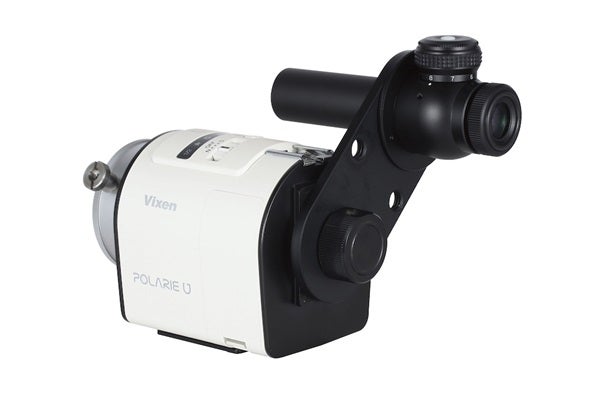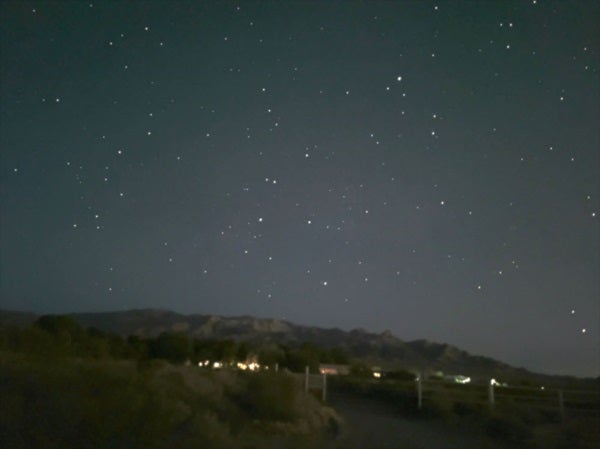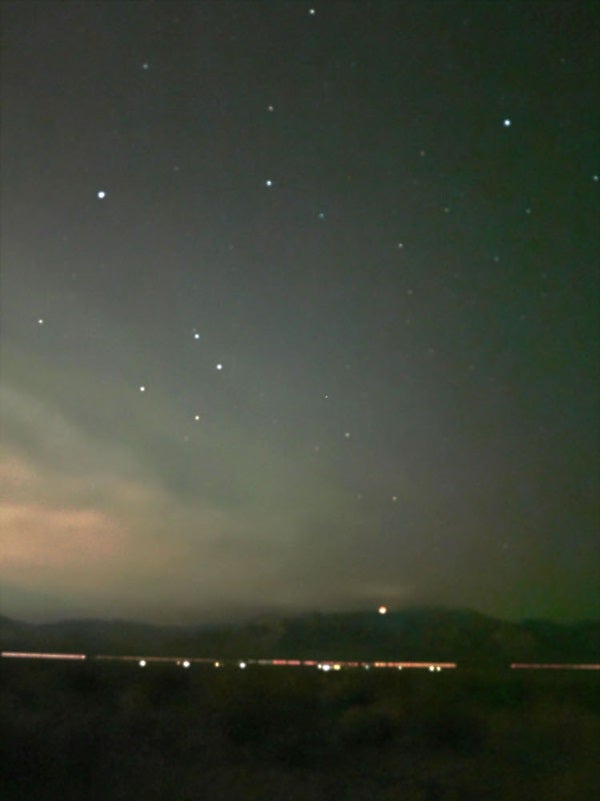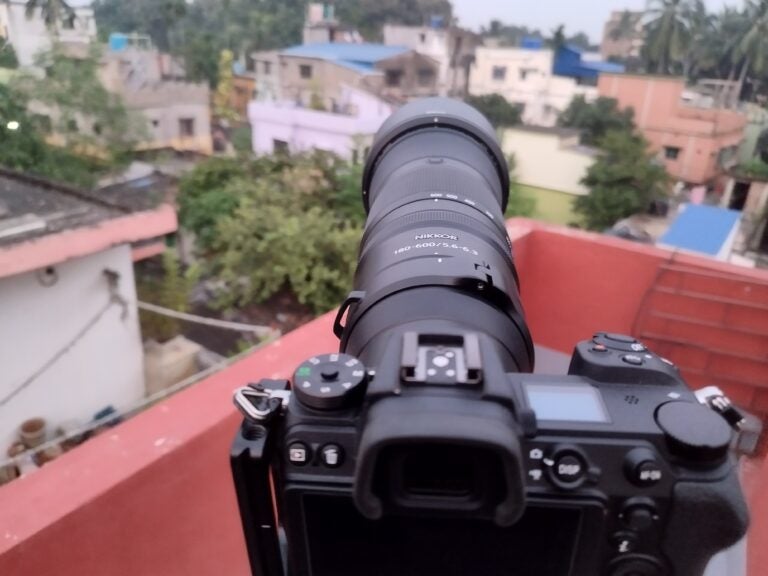Have you ever stepped back from your telescope, looked around you, and felt the urge to capture the beautiful landscape and a star-studded sky in the same image? Go online and you’ll find a deluge of opinions on the best camera to take such images. However, behind almost every shot is not just a great camera, but a good tracking device.
Star trackers allow you to take longer exposures, making those diamonds in the night sky pop. For 50-odd years, I have done tripod-mounted astrophotography, collecting images of every constellation visible from latitude 35 degrees. But the craving to capture wide-field vistas with a blanket of stars above finally struck. I began my search for a simple-to-use, high-quality star tracker. The Vixen Polarie U Star Tracker fit the bill.
Tech and specs
Vixen Co. of Japan, founded in 1949, is well known for not only its outstanding telescopes, but its eyepieces, binoculars, and sturdy mounts. They have long provided equipment for astrophotography, and now offer a star tracker that gives outstanding support for widefield images of the night sky.
When I received a small box from Vixen containing the Polarie U tracker, I was surprised at the compact size of the unit. At just 1.26 pounds (0.57 kilograms) and a mere 3.5 by 2.8 by 4.4 inches (8.9 by 7.2 by 11 centimeters), it fits comfortably into the palm of most people’s hands. Also included in the box was a polar alignment scope and mounting bracket.
Getting started with the unit is straightforward. I used a Celestron alt-azimuth mount for added stability. The Polarie U has a detachable mounting block on the front. I removed this to attach a ball-head camera mount. (This is not included with the Polarie U, but Vixen does have one available for separate purchase.) Then I just slipped a camera onto the ball head.
The maximum loading weight for the base Polarie U is 5.5 pounds (2.5 kg). But if you purchase and combine the Polarie Multi mounting block and Dovetail Slide Bar DD, you can reach a capacity of 14 pounds (6.5 kg).
On the top of the device is a band with a mode indicator. Below the indicator is an on/off switch and two buttons. The power switch has positions for two modes of operation, marked N and S, which allows you to choose whether you are in the Northern or Southern Hemisphere.
Once the unit is turned on, the indicator band lights up with five tracking options. The first is the half-speed tracking rate used for starscape photos. This mode splits the difference between the moving star field and the stationary landscape, allowing you to maximize your exposure time before blurring of either element becomes apparent. Next is a star icon, which provides full-speed celestial tracking for taking photos of star fields with no landscape. The next two icons are for solar and lunar tracking.
There is also a button with a phone icon. This feature activates the built-in Wi-Fi, which lets you link a phone or tablet to the Polarie U. Vixen has developed their own app that is available for iOS and Android. The app allows you easy access to speed controls, custom modes, bracketing options, and a lot more. One nice feature is being able to remotely control the camera shutter from the app.
Power for the Polarie U comes from four AA batteries or an external power supply connected via USB-C. Vixen says four new AAs will last seven hours at 68 degrees Fahrenheit (20 degrees Celsius).
To track the passage of stars in the Northern Hemisphere, the Polarie U must be aligned to Polaris, the north star. (For the Southern Hemisphere, using three stars in constellation Octans will do the trick.) The basic Polarie U comes with a simple sighting tube which slides onto the camera shoe on top of the unit. This only provides a rough polar alignment, however. Vixen also sells a polar alignment scope that attaches to the tracker with a bracket. If you plan to do more than basic starscape images, this would be worth adding to your equipment.
Instructions included
To test the unit, I set up a Nikon D610 digital camera on the Polarie U to take a few photos under a partly cloudy sky.
Taking good star photos depends on a number of factors. One of the most crucial ingredients is the skill and experience of the photographer. Thankfully, Vixen has provided one of the best beginner’s guides I’ve ever seen to help you get started if you are new to this process.
Another factor in taking good star photos is the quality and precision of the star tracker itself — and at this, the Polarie U excels. The manual recommends the half-speed starscape mode to increase exposure time when capturing a landscape with stars above, which makes the foreground appear to move less. With the camera on manual, the ISO at 1600, and the lens at f/2.8, I experimented with 30-second exposures before moving on to longer exposures. The Polarie U worked flawlessly at every exposure time.
When I used the Polarie U, I was brought back to the first photo of the night sky I ever captured. As a kid, I had to be more inventive with my setups. To take a long exposure, I covered my lens with a scarf, taped the shutter button down, and pulled off the scarf. After five minutes, I put the scarf back over the lens and released the shutter. The result was my first image of Orion in classic black and white.
Half a century later, technology has made it easy for anyone to take wonderful photos of the night sky, thanks to trackers like the Polarie U Star Tracker.
Product information
Vixen’s Polarie U Star Tracker
Tracking rates: Celestial speed, 0.5x celestial, solar, lunar
Maximum load: 5.5 pounds (2.5 kilograms)
Power: Four AA batteries, Ni-MH or Ni-Cd rechargeable batteries, or USB Type-C external power batteries
Battery life: About 7 hours at 68 degrees Fahrenheit (20 degrees C)
Dimensions: 88.5mm x 72mm x 110.5mm
Weight: 1.26 pounds (0.57 kilograms)
Price: Not available yet
Contact: Explore Scientific (U.S. distributor)
1010 S. 48th Street
Springdale, Arizona 72762
866.252.3811












